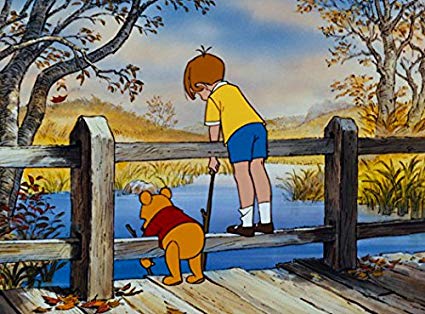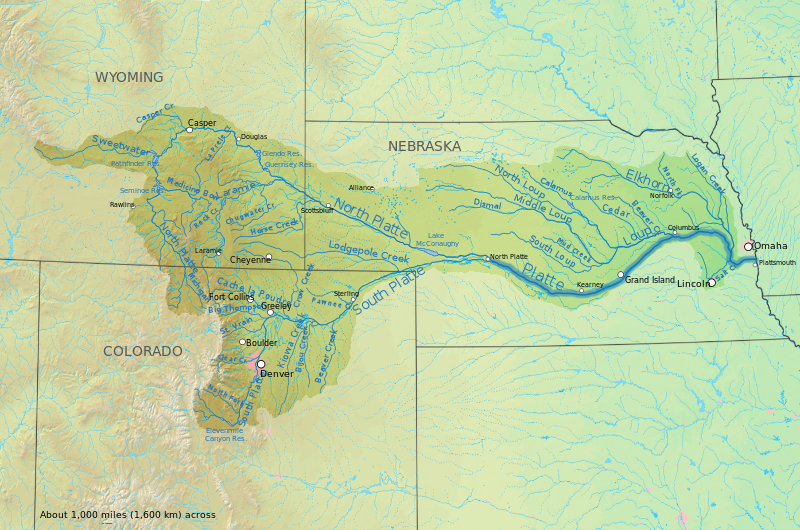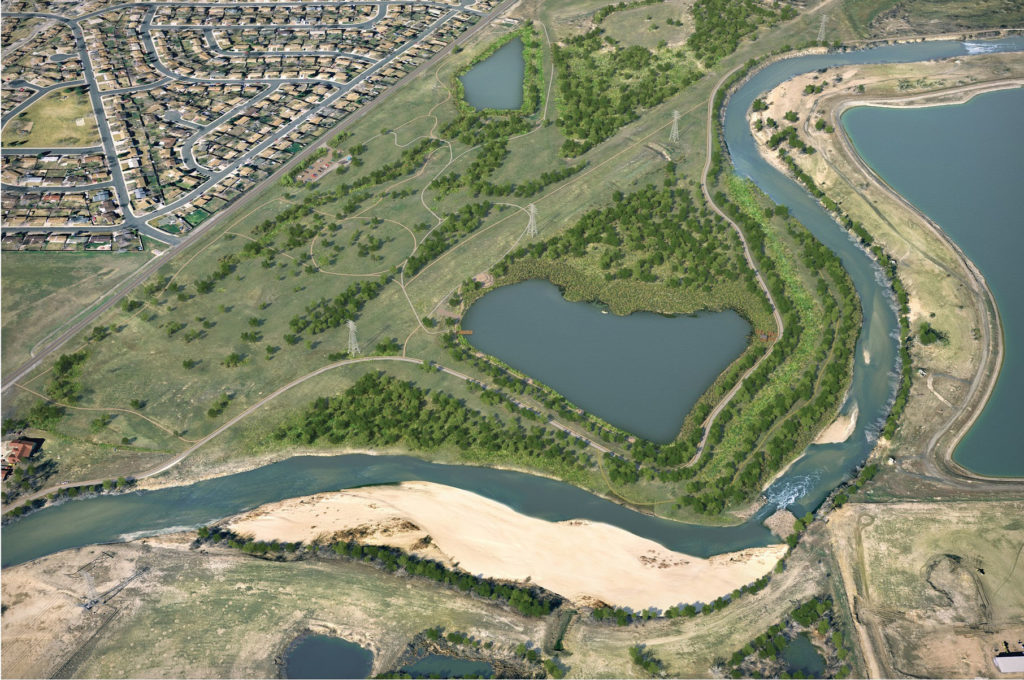We used to play Poohsticks as a child – a game learned from reading the century-old story of Winnie the Pooh, where you throw a pine cone off a bridge and then wait for it to float downstream until you see it come out the other side (quite a thrilling game when you’re 4 years old). As an adult, I can confidently say, we could all learn a thing or two from that little bear… “Rivers know this: there is no hurry. We shall get there some day.”

In 1974, a handful of visionaries took it upon themselves to inspire the Denver community to reinvest in what was perhaps its most ignored, underutilized, and blighted resource: the South Platte River. The challenge was to change the identity of the river from a force at odds with the city, to its current and evolving role as one of the city’s most valuable recreational and natural resource.
The South Platte River is one of the two tributaries of the Platte River, which flows to the Missouri River, then to the Mississippi River, and finally out to the Gulf of Mexico. It collects precipitation and runoff from the Rocky Mountains as it winds its way to the ocean.

Keeping the water clean along its journey is essential to the global picture, but on a more localized scale, it is important that the plants, animals and people that call the South Platte and its surrounding areas home have a safe and healthy environment.
From Fairplay to Greeley, almost 150 miles, DHM has had the pleasure of working on decades of projects that involve restoration of, access to, or education about the South Platte. We’ve been approached with different challenges – industrial pollutants, catastrophic flood damage, and excess agricultural nutrients. At one point, the South Platte was found to be so polluted that it was considered ecologically dead and unable to sustain aquatic life of any kind. Front Range municipalities, the Greenway Foundation, Trout Unlimited, landscape architects and many other firms, agencies, and individuals acknowledged this reality and have been working diligently to bring change.

Regardless of the obstacles, the outcome of each river restoration project has always been the same – improved quality of life for all. Now that it’s been a number of years since the initial vision for the South Platte has been implemented and built upon, the community is seeing positive changes.
Trout are spawning, children are swimming, and people are starting to value the river as a true natural resource. The City & County of Denver even made a proclamation this past year in collaboration with Denver Trout Unlimited, Proclamation 1059, recognizing that the fish habitat projects have been so successful that now trophy sized trout are thriving in the South Platte’s urban stretches.

Many remediation projects have been completed, but the work isn’t done. These restoration project sites are scattered – we need to do more, with more consistency, and educate as many people as possible about the successes thus far so the general public can help vouch for and continue to protect the South Platte. Just as we love to fish, kayak, and run along the river, so should our children, and our children’s children. As landscape architects and ecologists, we’ve helped it get this far, and as citizens, it is our duty to be stewards and maintain it for future generations.
One way that DHM partakes in the stewardship of the river is by cleaning up trash. For the past few years, the DHM Denver office has gone out to the river with the Greenway Foundation to clean up the riverbanks at different stretches of the South Platte. This year, we will be doing our South Platte river cleanup in Thornton at Pelican Ponds Open Space, right in time for its June 6th grand opening after years of reclamation, realignment, restoration, and park design to put its gravel mine days behind it.

In addition to the revitalization of the South Platte, a larger healthy rivers movement has taken off throughout all of Colorado and the Rocky Mountain region. Efforts along the Roaring Fork, Cache la Poudre, Gunnison, Yampa, Uncompahgre, and Animas Rivers, among others, to restore and better maintain the riparian ecosystems has been a focal point for both public and private land owners.
With plenty of room to continue to exercise and improve riverine stewardship activities, children’s environmental education is one of the best targets to guarantee appreciation for the work that’s already been done and the longevity of these projects. It’s certainly a priority in Colorado, and organizations like Great Outdoors Colorado are helping direct financial resources towards educating the next generation of stewards, but as we’ve witnessed over the last four decades, change does not happen overnight, and we must be patient with the process and our expectations. We shall get there someday.

